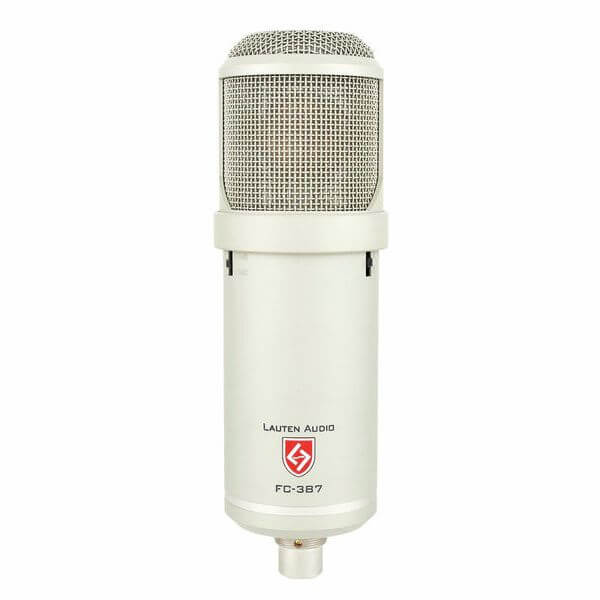Best Large Diaphragm Microphones
Introduction
Large-diaphragm condenser (LDC) microphones are the go-to choice for recording studio vocals and voiceovers. This is because the human voice is one of the most commonly recorded sound sources in the world. Of course, vocals are just one of the many applications where LDCs excel.
In short, a large-diaphragm microphone is likely the most versatile and useful option if you’re buying your first microphone. It is particularly suited for recording studio vocals and most acoustic instruments.
So, if you want to record your voice, acoustic guitars, or create pristine voiceover tracks for your videos, a large condenser microphone will be your best choice.
Keep in mind that condenser microphones are sensitive, making them great for all-around studio use. However, you’ll likely need to consider some basic acoustic treatment in your home recording studio to achieve the best results.
Large-diaphragm condensers vary significantly in price, and their popularity has led to a wide variety of different models. In this article, we will cut through the noise and focus on the best large-diaphragm condenser microphones that cost over $800.
We just want to let you know that we’ll list these best large-diaphragm condenser microphones in no particular order. They’ll be randomized as we don’t wish to sort them from best to worst.
Listed below are our Top 11 Best Large Diaphragm Condenser Mics:
1. Manley Reference Cardioid Large-diaphragm Tube Microphone
Most audio engineers know Manley Labs for its rack gear, but Manley also makes microphones. The Reference Cardioid and Reference Gold are hand-built tube mics designed for critical recording applications.
The Manley Reference Cardioid Microphone shares the same electronic attributes as the Gold Reference Series, but it has a center-fixed cardioid-only capsule with a thicker gauge (6 microns) gold-sputtered diaphragm.
With the same film thickness and construction, similar high-frequency resonance (slightly edgy), similar proximity effect, and good resistance to pops and sibilance issues, the Reference Cardioid closely resembles the sound of classic European tube mics, like the beloved U47 when they were new.
Its rich tonal balance and smooth character are consistently admired for instruments like guitars, drum overheads, saxophones, and especially vocals. If you find yourself relying on your compressors and boosting 5 or 10K with your current mic to get a bit more bite, the Reference Cardioid might be just the mic you need.
Unlike a classic mic, the Manley is still in production, made with modern components, and backed by the service guarantee of an ongoing company. If you’re recording to tape or want a natural sound for instrumental tracks, the Reference mics could be unmatched.

| IMAGE | PRODUCT | Amazon Store | For US Customers | For EU Customers |
|---|---|---|---|---|
Manley Reference Cardioid Large-diaphragm Tube Microphone |
2. Chandler Limited TG Microphone Large-diaphragm Condenser Microphone
Chandler Limited has long been known for incorporating the warm, classic sound of traditional studio desks into its products. With this microphone, they’ve taken inspiration from the legendary Abbey Road mastering console.
In appearance, the TG mic is reminiscent of the Neumann U 47/48, similar to Chandler’s earlier model, the valve-powered REDD. However, unlike the REDD Microphone, which had a built-in preamplifier, the TG Microphone is solid-state, like the TG series of consoles. It comes with its own power supply, so there’s no need for +48V phantom power.
The TG mic features a brand-new capsule with a dual-diaphragm gold-sputtered edge-terminated design, differing from the REDD Mic’s center-terminated, platinum-sputtered capsule.
Wade maintained the classic Neumann U 47 options of cardioid or omni patterns, which can be switched directly on the mic just below the capsule. There is also a second switch on the capsule that creates a -10 dB pad.
Kudos to Wade, Abbey Road, and the Chandler team. This is a fine example of “mission accomplished.” The TG Mic can be used anywhere you’d typically use classic FET or even tube mics, yet it maintains its own unique sound that one day may become a classic in its own right!
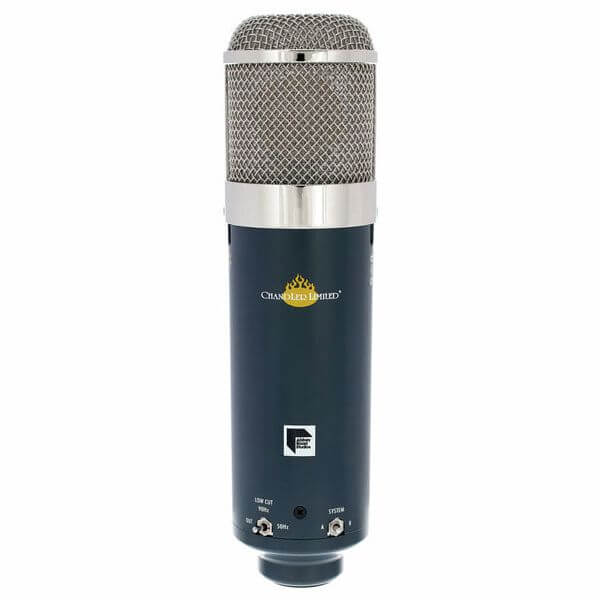
| IMAGE | PRODUCT | Amazon Store | For US Customers | For EU Customers |
|---|---|---|---|---|
Chandler Limited TG Microphone Large-diaphragm Condenser Microphone |
3. Lewitt LCT 1040 Tube Microphone System
Another impressive addition to the market is the LCT 1040 from Lewitt. This microphone offers groundbreaking technology that hasn’t been seen before.
The LCT 1040 stands out in the microphone market due to its unmatched versatility and flexibility in the studio. Essentially functioning as multiple microphones in one, it features four distinct tubular sonic characteristics: Clear, Warm, Dark, and Saturated, which can be selected via remote control.
The microphone includes a flat filter, as well as 40 Hz, 80 Hz, and 120 Hz filters. Additionally, it offers four levels of attenuation (0, -6, -12, and -24 dB). This microphone is a must-have for serious audio engineers.
If you’re looking to save time auditioning microphones during recording, the LCT 1040 is an excellent choice. We highly recommend it to anyone who can get their hands on it. A perfect 10 out of 10!
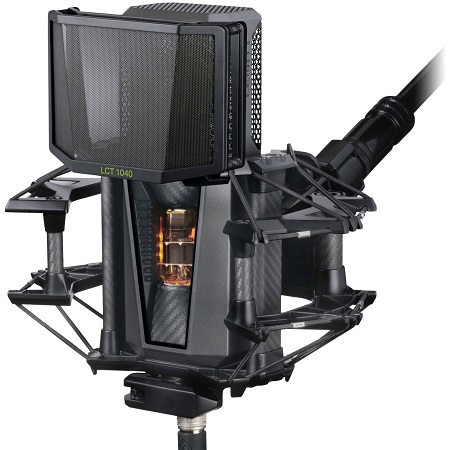
| IMAGE | PRODUCT | Amazon Store | For US Customers | For EU Customers |
|---|---|---|---|---|
Lewitt LCT 1040 Tube Microphone System |
4. Telefunken TF51 Large-diaphragm Tube Condenser Microphone
The Telefunken Elektroakustik TF51 is a modern take on the classic “Austrian” microphone sound, reminiscent of the Telefunken ELA M 251E and C12. The TF51 continues this legacy by offering a clear midrange and an airy high end, capturing every nuance in exquisite detail. It is a reliable first choice for standout vocals, acoustic instruments, and percussion.
This lifelike fidelity is achieved with high-quality components inspired by these classic models. The 6072A vacuum tube (also found in the ELA M 251E and C12) is paired with an edge-terminated style capsule similar to the historic CK12.
The output transformer is a custom German-made Haufe transformer, the original manufacturer for Telefunken. This attention to detail gives the TF51 a beautifully open and smooth sonic profile.
Sonically, the TF47 is flat from 20Hz up to 500Hz, where it starts rising to a peak of about 3dB at 4kHz. From there, the curve rolls off quickly. As such, the TF47 exhibits the characteristic midrange thrust one expects in a 47-family microphone; it’s a sound that can quickly push a vocal, guitar, or drum to the front of the mix.
Each TF51 microphone system comes with a multi-sample M 903 power supply, M 803 tube cable, ZC03 case, M 703 shock mount, M 782 stand mount, and microphone sleeve.

| IMAGE | PRODUCT | Amazon Store | For US Customers | For EU Customers |
|---|---|---|---|---|
Telefunken TF51 Large-diaphragm Tube Condenser Microphone |
5. AKG C414 XLII Large-diaphragm Condenser Microphone
The AKG C414 is one of the most popular and widely used microphones in the world today. You’re likely to find one in every major studio. Let’s take a look at some of the main features of this mic.
The C414 is renowned for its high-end clarity and sound character. This is what makes the C414 XLII (which has more high-end than the XLS to suit vocals) especially popular as a vocal microphone.
Underneath its stunning gold grille, on the front panel, there’s a 9-pickup pattern selectable switch. With the click of a button, you can switch between 5 main polar patterns or use 4 hybrid patterns between each of these 5. Below this switch is an LED light strip that allows you to see which pattern is selected.
The LED strip also has a very useful feature for detecting peak overloads and clipping. The LED will change from green to red even when the faintest distortion from clipping occurs, allowing you to adjust your levels as needed. This is particularly helpful if you’re recording especially loud sound sources, such as drums or blaring guitar amps.
To wrap up this review, the AKG C414 XLII is a great all-around microphone. You’ll want a well-treated room for recording vocals and should have excellent results with care. You can start by using a good pop filter to reduce direct plosive sound waves from the artist.
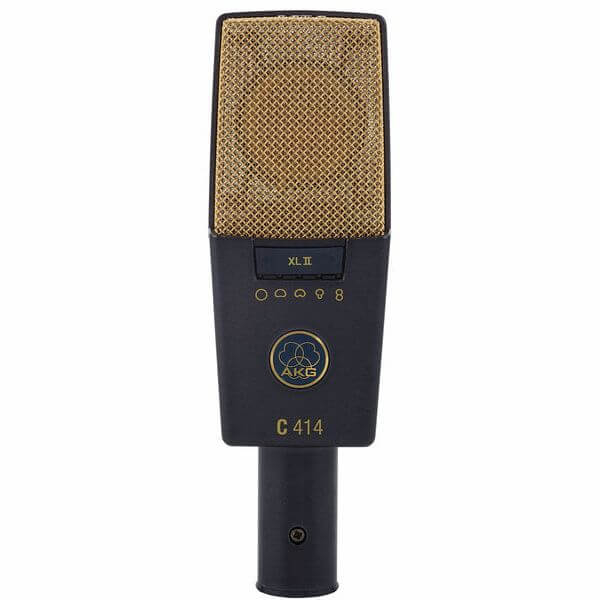
| IMAGE | PRODUCT | Amazon Store | For US Customers | For EU Customers |
|---|---|---|---|---|
AKG C414 XLII Large-diaphragm Condenser Microphone |
6. Lauten Audio Atlantis FC-387 Large-Diaphragm Condenser Microphone
The Lauten Audio FC-387 Atlantis is essentially three distinct FET microphones housed within a single, hand-finished brass enclosure.
Developed in collaboration with renowned producer and mix engineer Fab Dupont, the Atlantis offers a dynamic and versatile range of sounds. This makes selecting the right microphone for even the most challenging sources as simple as flipping a switch.
From modern, tight, and vivid tones to a smoky vintage velvet feel, the Atlantis provides an analog abundance of mix-ready sounds in one microphone.
Three separate signal paths allow for easy tonal selection with the flip of a switch. The Gentle option is warm with a classic feel, ideal for taming bright or abrasive sound sources. The Neutral option is elegant and balanced with a clean top-end, perfect for acoustic instruments. The Forward option is bold, present, and modern without being harsh – the quintessential sound of contemporary Pop, Hip-Hop, and R&B.
The capsule of a microphone captures music’s most significant moments, converting them into electrical energy with relentlessly unforgiving precision.
Lauten’s precision-crafted 38mm capsule is one of the largest in the world, a unique super-transducer designed in Silicon Valley and tuned by hand to capture the spirit, soul, and beauty of performance with unprecedented authenticity and realism.
The Atlantis signal path is hand-populated with high-resolution, low-distortion polypropylene capacitors, a US-made low-noise FET, and a custom-wound output transformer that puts the finishing touches on every sound passing through its copper windings. The result is a simple, mix-ready sound brimming with life.
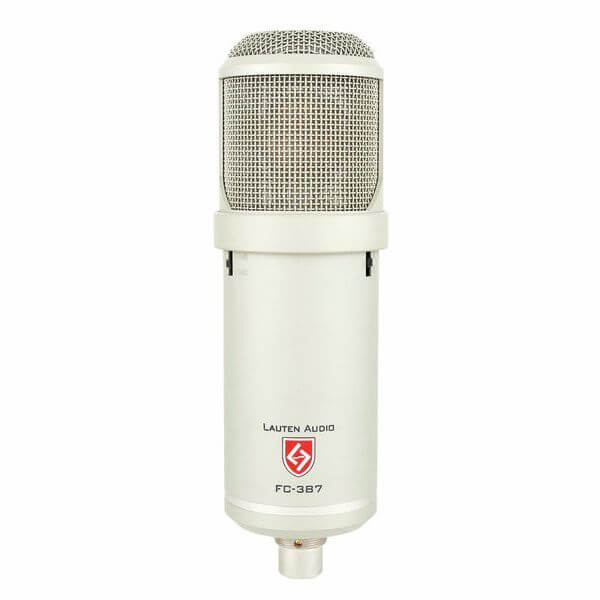
| IMAGE | PRODUCT | Amazon Store | For US Customers | For EU Customers |
|---|---|---|---|---|
Lauten Audio Atlantis FC-387 Large-Diaphragm Condenser Microphone |
7. Mojave Audio MA-300 Large-diaphragm Tube Condenser Microphone
The MA-300 has a pleasant, hefty feel to it and features a switch for a high-pass filter and a built-in -15 dB pad. The included adjustable shock mount is of the heavy-duty variety, which is great because many shock mounts tend to fall apart after some time.
Everything about the physical product is top-notch. The packaging is excellent, offering more than enough protection for the mic and accessories. The shock mount is sturdy and provides a range of adjustability. It was easy to set up and position the mic for all applications. The cable from the mic to a power source is a well-made seven-pin XLR.
The MA-300’s two capsules are 3 microns thick (thin diaphragm) and are based on the design of Mojave’s MA-200. Instead of a stepped pattern selector, the MA-300 offers a continuously variable, remotely controlled pattern selection between Omni and figure-8.
Mojave Audio recommends the MA-300 for various applications, including vocals, voiceover and broadcast, acoustic instruments, piano, drum overheads, and drum rooms, as well as orchestral and choral recording.
As one would expect with a tube mic of this price, it made everything sound really warm and full, with no harshness in the high end. Your recording equipment will be grateful for plugging in such a mic!
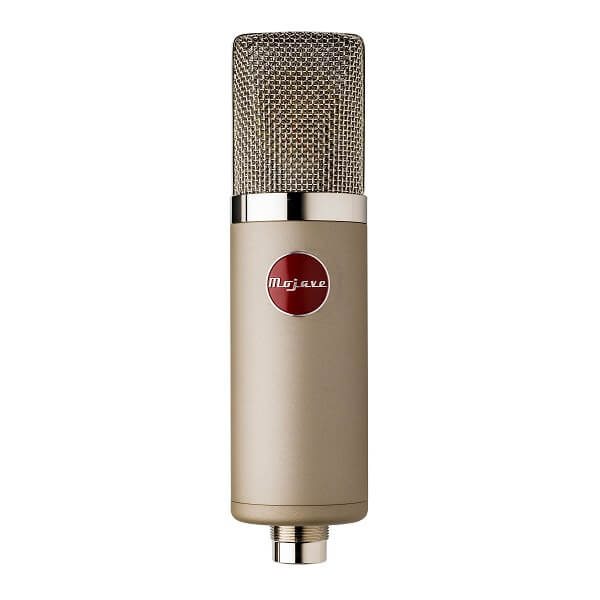
| IMAGE | PRODUCT | DETAILS | For US Customers | For EU Customers |
|---|---|---|---|---|
Mojave Audio MA-300 Large-diaphragm Tube Condenser Microphone |
|
8. sE Electronics Rupert Neve Large-diaphragm Condenser Microphone
sE Electronics and Rupert Neve Designs have collaborated to create the RNT tube condenser microphone, marking the third mic in their partnership series. This microphone boasts pure Class-A design and features an entirely discrete setup at each stage.
The microphone’s large, retro-inspired power source allows you to choose from nine polar patterns, including Omni, cardioid, figure eight, and everything in between.
The microphone’s first stage is tube-based and includes an ultra-low noise ECC82 tube within its chassis, along with a custom-built RND output transformer.
The Class-A circuitry delivers a wide dynamic range and the highest possible SPL (Sound Pressure Level) while maintaining a low noise floor and minimal background noise. The diaphragm, tube, and internal components are encased in a robust all-metal chassis, all handcrafted at the sE manufacturing facility.
The second stage of the microphone takes place within the power supply. Here, you can select the polar pattern, choose between two high-pass filters at 40Hz and 80Hz, and opt for three gain staging options.
The standard gain setting is at 0dB, which we found to provide substantial gain compared to a typical tube condenser. The +12dB setting is ideal for soft and intimate sources, while the -12dB works well for louder vocalists, close drum miking, or electric guitar amplifiers.
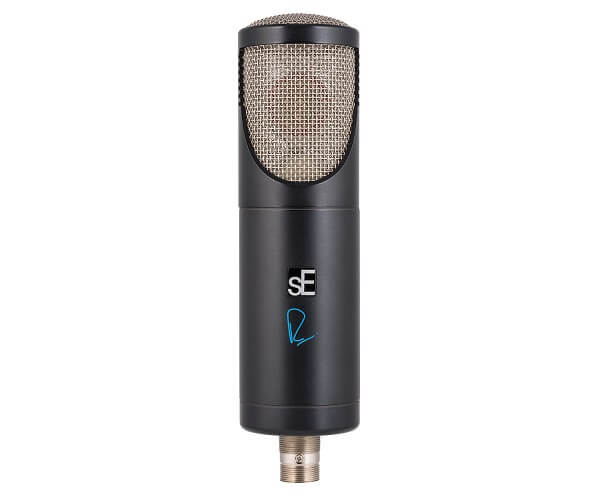
| IMAGE | PRODUCT | DETAILS | For US Customers |
|---|---|---|---|
sE Electronics Rupert Neve Large-diaphragm Condenser Microphone |
|
9. Neumann TLM 103 Large-diaphragm Condenser Microphone
At first glance, the Neumann TLM 103 is a stunning microphone. Unlike cheaper microphones, which often have slight inconsistencies in their production, this microphone is pristine, showcasing Neumann’s attention to detail not just in the inner workings but also in the design.
The TLM 103 belongs to the FET 100 series of condenser microphones from Neumann. “TLM” stands for “transformerless microphone.” Unlike the legendary U87, the TLM 103 uses an electronic circuit instead of the traditional output transformer.
Similar to transformers, the electronic circuit ensures high purity in the audio signal, reducing electromagnetic interference that could degrade it.
The transformerless design of the TLM 103 also results in extremely accurate low frequencies and spares this microphone from the core saturation experienced by transformer-based microphones.
The sound of the TLM 103 is heavily modeled after Neumann’s legendary U87, and Neumann has done an excellent job of delivering pristine sound quality at a (relatively) affordable price. What impressed us the most is how sensitive and detailed this microphone is, with almost no audible self-noise.
In terms of sound character, the TLM 103 closely resembles the U87 for the most part. A key difference is its boosted high-end frequencies, which create a more modern sound.
While this results in a brighter sound, the microphone still manages to deliver a buttery smooth sound with minimal harshness. It sounds very lively, with recordings that seem to cut through the mix with a pleasant presence.
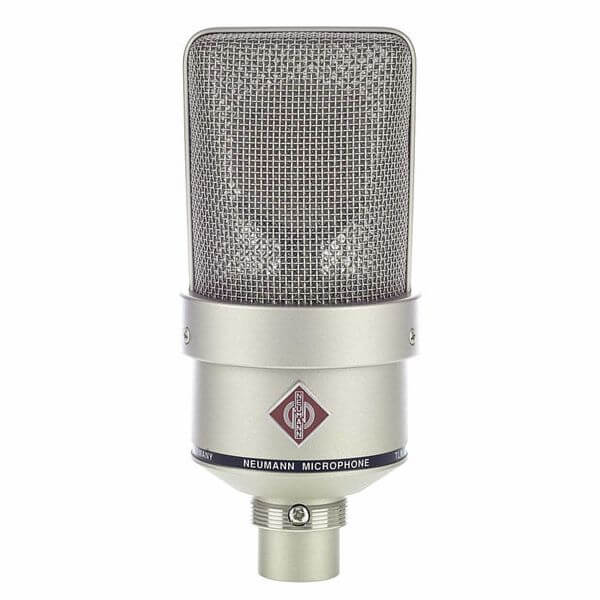
| IMAGE | PRODUCT | Amazon Store | For US Customers | For EU Customers |
|---|---|---|---|---|
Neumann TLM 103 Large-diaphragm Condenser Microphone |
10. Townsend Labs Sphere L22 Microphone Modeling System
The Townsend Labs Sphere L22 Precision Microphone Modeling System combines a large-diaphragm condenser microphone with the Sphere plug-in to model 34 of the most sought-after classic microphones, including Neumann, Telefunken, AKG, and more.
Switching between microphones in a session can be tedious, but thanks to the software, you can change mic type, polar pattern, reduce bleed, room coloration, feedback, and even adjust the proximity effect—either during or after tracking vocals, acoustic and electric guitars, string and wind instruments, percussion, room sound, and more.
The Sphere L22 is a dual-capsule microphone with twin outputs, custom-designed to capture the three-dimensional sound field with precise detail, including the directional and distance information otherwise lost with a standard single-channel microphone.
Remarkably rugged, the mic can handle over 140 dB SPL before clipping and won’t be damaged by high SPLs or air blasts like some classic microphones might be. It also has a self-noise level of 7 dB-A SPL, which is lower than most classic microphones and comparable to many of the finest modern microphones.
Two 3-pin XLR mic preamp inputs are required for the mic, as all mic-modeling and other advanced DSP features occur within the Sphere plug-in. Note that the mic can be used with or without modeling.
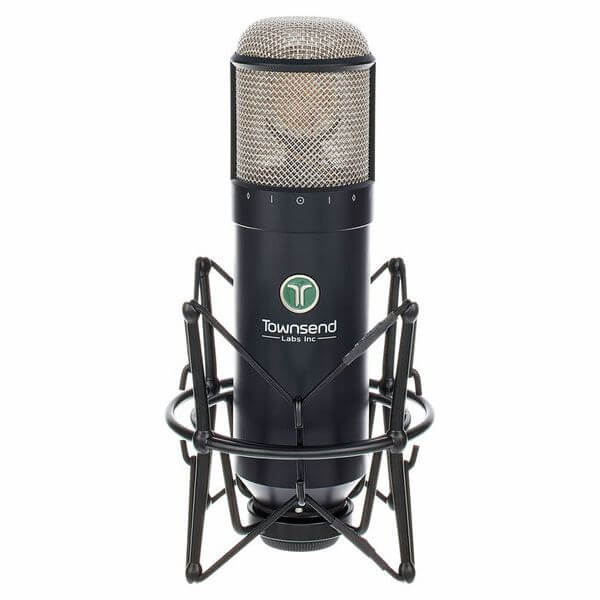
| IMAGE | PRODUCT | Amazon Store | For US Customers | For EU Customers |
|---|---|---|---|---|
Townsend Labs Sphere L22 Microphone Modeling System |
11. Warm Audio WA-8000 Large-diaphragm Tube Condenser Microphone
Warm Audio is renowned for re-creating classic microphones and outboard gear, offering them at affordable prices. The company describes its latest product, the WA-8000, as “a professional large-diaphragm tube-driven studio condenser microphone.”
According to Warm Audio, the internal components of the WA-8000 are “true to spec” with the original. These include a Lundahl transformer, a brass K-67-style capsule, and a 6AU6 tube.
It’s intriguing how Warm Audio can provide these components at a fraction of the cost, but this is something the company has been successfully achieving for a while. Like the C800G, the WA-8000 features both cardioid and omnidirectional polar patterns.
The WA-8000 is easily recognizable by its open top-end, crystal clear midrange, and remarkable ability to capture every detail of acoustic sources.
While mostly known for modern R&B, Rap, and Hip-hop, the WA-8000 gives you that unmistakable “airy” and polished sound associated with some of the most high-fidelity recordings of the ’90s and beyond. The WA-8000 is a true studio workhorse, equipped to capture any voice or acoustic instrument with elite results.
The WA-8000 comes with a professional-level, hard carrying case to ensure the secure transport of the microphone and its premium components—wherever you record.
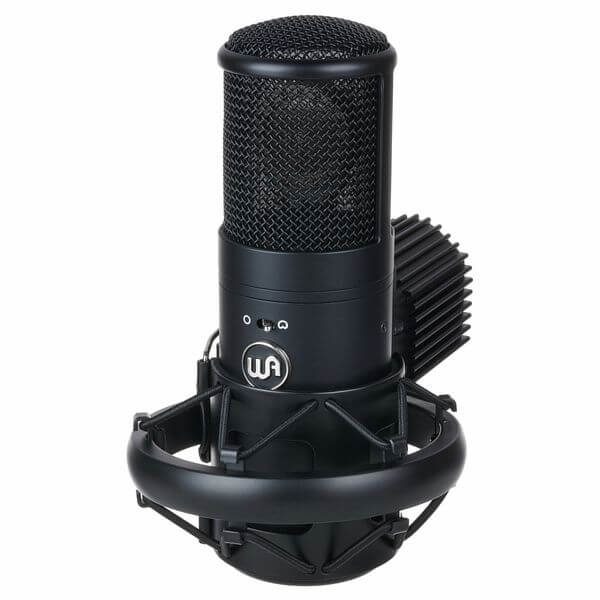
| IMAGE | PRODUCT | Amazon Store | For US Customers | For EU Customers |
|---|---|---|---|---|
Warm Audio WA-8000 Large-diaphragm Tube Condenser Microphone |
Two Important Things When Buying High-End Condenser Microphones
The first step when shopping for a microphone is to clearly identify your specific needs. Different purposes require different specifications, and various types of microphones have unique characteristics.
By aligning your needs with the characteristics of a particular microphone type, you can determine the basic type that fits your requirements. From there, focus on examining individual specifications to find the microphone that best suits your application. We believe these two considerations are crucial when purchasing a new condenser mic.
Dynamic Range and Headroom
When you invest in a more expensive condenser microphone, one of the key features you’re paying for is the dynamic range and headroom it offers.
Think of dynamic range as the difference between the quietest and loudest sounds you can record. Some microphones perform well across their entire dynamic range, while others do not.
It’s common to hear of different microphones losing bass response or picking up unwanted frequencies at various levels. A high-quality condenser microphone provides ample room to work with and offers a consistent response (or at least positively affects the response) throughout its full dynamic range.
The dynamic range of a microphone is also related to its noise floor. The Electro-Voice RE20, a popular choice in many studios, is known for being “gain hungry.” It has a wide dynamic range, but you need to turn the gain up quite high to achieve an acceptable level, which can introduce unwanted noise if the rest of your signal chain isn’t properly shielded or grounded.
Frequency Response
Almost every professional microphone comes with a graph showing its frequency response. A microphone’s frequency response measures how effectively it picks up sounds across different frequency ranges.
In simpler terms, some microphones might capture more high or low frequencies compared to others. This is a key reason why you might prefer using one mic over another for different audio sources.
Understanding how a microphone responds to certain frequencies should definitely influence your decision when purchasing one. If you frequently use this microphone to record vocals, consider which frequencies you typically adjust with EQ in your current recordings.
For instance, if you often reduce 3–5dB at 5kHz, do you really want a mic that accentuates that frequency range? Choosing a mic that complements your needs could save you valuable production time.
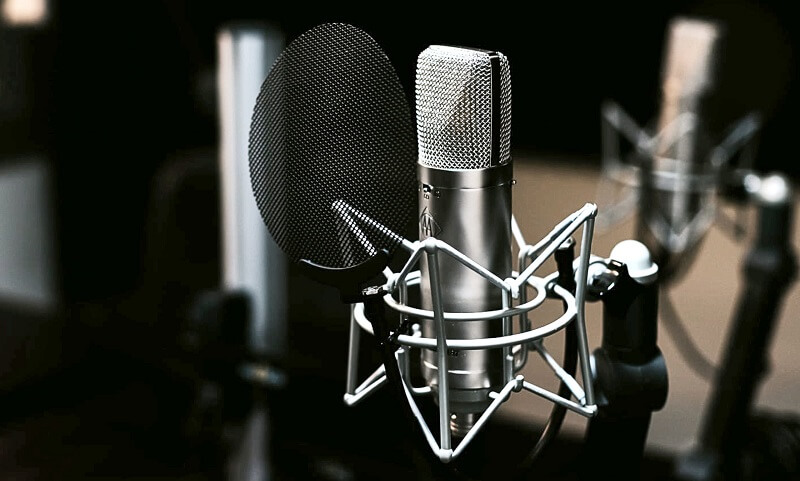
Conclusion
When it comes to large-diaphragm condenser microphones, this list highlights excellent options for any studio recording needs. These mics are versatile, suitable for recording everything from acoustic guitar to lead vocals, and they’ll undoubtedly enhance your recording experience.
Unlike room mics or small-diaphragm condenser mics, the large-diaphragm condenser mic serves as the centerpiece of your studio. We’ve compiled what we believe are the top 10 best condenser mics for any audio recording needs.
With any of these selections, you’ll capture sound at the highest quality, obtaining a transparent sound directly from the source. Whether you choose a cardioid polar pattern or another option from the switchable polar patterns, these mics deliver exceptional performance.
We believe all of these 11 mics are essential tools for every audio engineer seeking rich sound from a reliable, high-performance mic. Truly the crème de la crème—the best condenser microphones anyone could wish for!
If you have any questions about this topic, please let us know in the comment section below!

